

 MATT LOVELL shows us the basics when using slow-action point motors.
MATT LOVELL shows us the basics when using slow-action point motors.
In Part One we looked at solenoid motors and how they operate using different types of switches. This issue concentrates on slow-action motors and how they can be used on the railway. Slow-action motors add to the realism on your layout by replicating the operation of real points. They work by way of a motor, which slowly moves the point blades from over, just like the real thing.
One thing that you will need to do if you are choosing slow-action motors is to remove the over-centre spring in the point, otherwise the blades with simply try to "snap" over to one side which defeats the look and realism of the slow action motor.
There are many types of slow action motor but for this article we will look at the designs from both Peco and DCCconcepts.
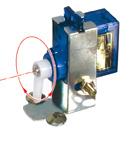
Peco released the Smart Switch, and it uses a 9g servo to pull and push the tie bar on the point in the desired direction. The servo is controlled by a control board and operated by a simple on-off switch.
Once the switch is turned on, the servo slowly moves the tie bar on the point. To set the point in the other direction the switch just needs to be turned off.
All that is needed to power this system is a 12v DC supply and the control board. The board has four outputs which will power four servos individually, or eight if you have cross-over sections where two points need to be powered together.
Here we will look at the newest motor released by DCC Concepts, The Cobalt SS Motor.
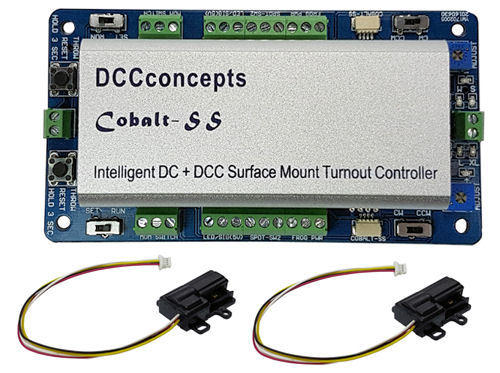
Cobalt-SS uses a highly accurate stepper motor and worm gear and shaft to push and pull the tie bar in the required direction. The Cobalt SS is very small so can be hidden above board easily, they can be powered by a 12v DC or a DCC supply attached to the control board provided. A passing contact switch or DCC command can then be used to operate the motor forward and back. As these motors use very little power multiple motors can be used on one output as long as you use the extension or reverse harnesses, so they can be very economical.
Just as with Cobalt iP Digital, there is no need for added switching or an added decoder to drive them - it is all built in and this Cobalt-SS is equally usable either with DC or DCC.
Last, but by no means least, we take a look at the DCCconcepts Cobalt motors.
The Cobalt motor is a sturdy machine that comes in three different designs all with their own different outputs and internal switches. All the Cobalt items are available as singles, six-packs, and twelve-packs.
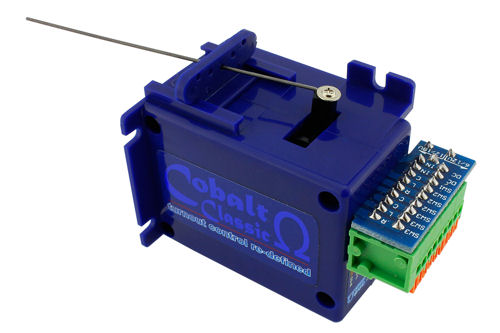
The Omega is suited for Analogue model railways, and has two internal switches for frog polarity and interlocking if needed. It can be powered by 6 to 18v DC from a DC power supply or DCC Decoder. There is a switch on each motor to let you choose the appropriate voltage range for your supply. Nothing else will be needed as there are two built in changover switches for point frogs and other uses.
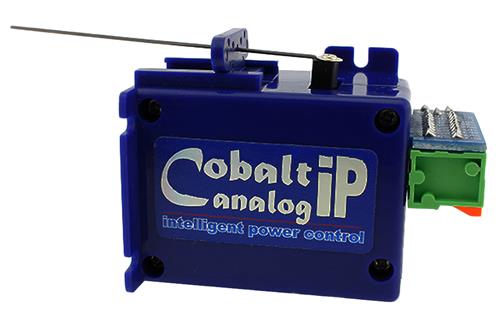
The IP (Intelligent Power) point motor is a later design of the Omega but with an additional internal switch for LEDs. They can also handle a better fluctuation of power (between 7-23v DC) which makes them more robust and versatile motor. Power can be fed straight from a DC power supply or via a digital decoder. Nothing else will be needed as there are two built in changover switches for point frogs and other uses.
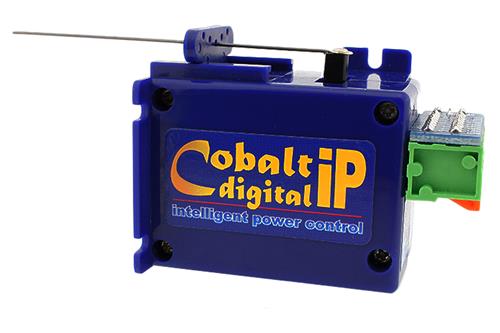
The Digital iP is the same as the IP motor above, but with a fitted DCC Decoder. Power for this motor can be supplied straight from a digital layout without the need for additional decoders to be added in to the circuit. With Cobalt iP Digital there is no need for added switching or an added decoder to drive them - it is all built in and this point motor is suitable either with DC or DCC.
The wiring of these Digital Slow Action Point Motors couldn't be simpler, as they just require two wires from the power supply and the switch is then attached to the motor. Both the Omega and the IP motors can be switched by a single pole double throw switch set up to reverse power polarity to the motor or by push button switches set up in the same way.
The digital motor can be switched by either a DCC command from a controller, or by the same switch as the other two motors. Cobalts are larger than solenoid motors so are ideally suited to under board fitting to hide them from view. They are all fitted with spring clips to insert the wires into so no soldering is involved. Other switch methods are available such as the Alpha Switch System.